Stress management by dr. abakash barik
Download as pptx, pdf1 like423 views
A report by Dr. Abakash Barik discusses starting each day without dwelling on the past. The report emphasizes that every morning provides an opportunity to start anew as it marks the beginning of the rest of one's life.
1 of 31
Download to read offline


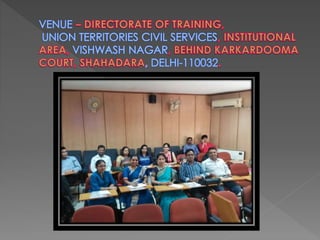

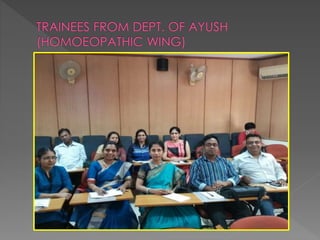


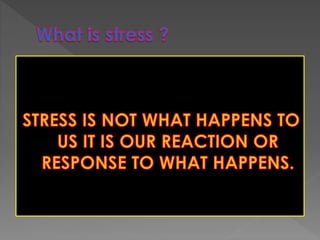
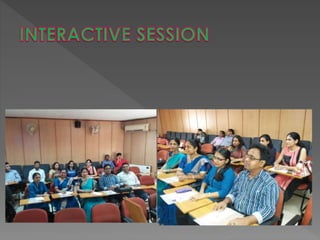
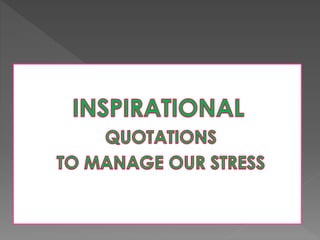

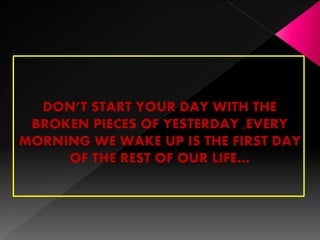



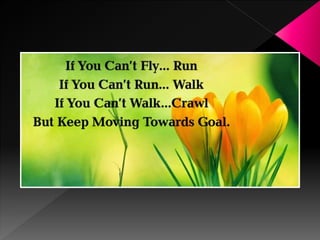

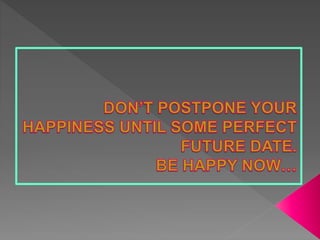
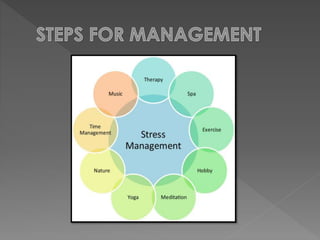
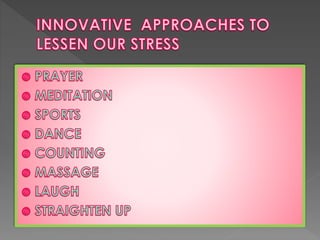
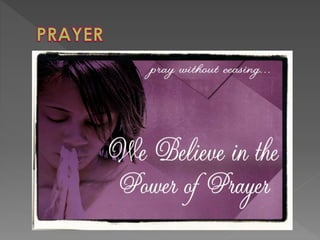

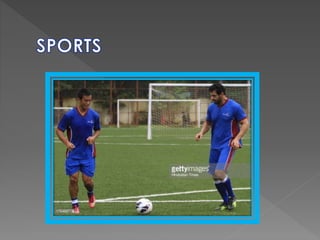
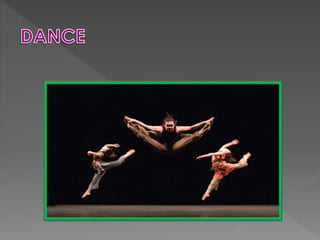


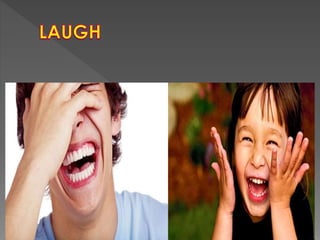
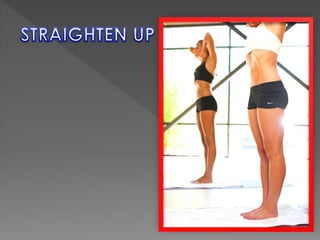
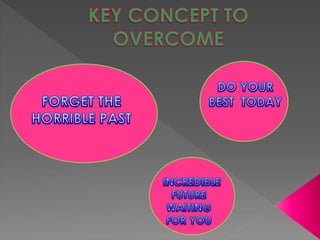

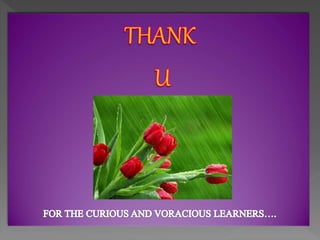
Ad
Recommended
Rheumatoid arthritis with homoeopathy approach by Dr.Ankit Srivastav
Rheumatoid arthritis with homoeopathy approach by Dr.Ankit SrivastavDrAnkit Srivastav
Ěý
This document discusses the objective signs and symptoms of rheumatoid arthritis and its homeopathic management. It defines rheumatoid arthritis as a persistent inflammatory synovitis typically involving peripheral joints in a symmetrical distribution. It describes the potential for synovial inflammation to cause cartilage destruction, bone erosion, and changes in joint integrity. It outlines various symptoms of chronic polyarthritis and rheumatoid arthritis such as joint pain, stiffness, swelling, and tenderness. It discusses specific joint involvement and deformities that can occur. It also mentions potential extra-articular manifestations and discusses several homeopathic remedies that may be useful in managing rheumatoid arthritis symptoms, including Guaiacum officinale, Kali iodatum, Salicylic acid,Community medicine visit file
Community medicine visit fileDr Ankita Bali
Ěý
This document contains a community medicine visit file for a student named Ankita Bali. It lists 7 visits/programs she attended in 2014 for her community medicine course, including World Population Day, a visit to Mother Dairy, Nutrition Day, a visit to the National Centre for Disease Control, a sewage treatment plant, a water treatment plant, and National AIDS Day. For each visit, there is a 1-2 page assignment summarizing the activities and lessons learned from that visit related to community health issues. The visits provided exposure to and education on topics like family planning, nutrition, water/sewage treatment, and infectious diseases.10 year papers compilation of Repertory
10 year papers compilation of RepertoryDr Ankita Bali
Ěý
This document provides a compilation of repertory topics and resources for students. It includes:
1. A repertory syllabus outline according to CCH guidelines with topics such as the history of repertories, case taking, repertorization methods, and key repertories.
2. A list of 40 repertory topics that should be covered based on 10 years of previous exam questions, including types of repertories, case processing techniques, and details on important repertories.
3. A chapter-by-chapter breakdown of repertory topics to guide students in organizing their studies, with sections on introduction to repertorization, case taking, early and modern repertories, and moreHypertension - Homeopathy - Miasm
Hypertension - Homeopathy - MiasmDr Manshi Mankiwala
Ěý
This document discusses hypertension from a homeopathic and miasmatic perspective. It provides epidemiological data on hypertension and examines the etiology, pathology, and clinical presentations of hypertension through the lens of the psoric, tubercular, sycotic, and syphilitic miasms. Key homeopathic remedies are discussed for each miasm, with indications for remedies like Aconite, Apis, Arnica, Arsenicum album, Aurum, Cactus, Digitalis, Kali carbonicum, Kalmia, Lachesis, Lilium, Naja, Phosphorus, and Pulsatilla. The document aims to provide homeopaths a broad understanding of miasmatic influences inA CONCISE REPERTORY OF HOMOEOPATHIC MEDICINES - PHATAK
A CONCISE REPERTORY OF HOMOEOPATHIC MEDICINES - PHATAKSalini Mandal
Ěý
This document discusses the history and features of A Concise Repertory of Homoeopathic Medicines. It was conceived by Dr. Salini Mandal to provide a concise and handy repertory arranged in alphabetical order. With help from friends like Mr. S.L Kapadi and Dr. (Mrs) Homai A Merchant, Dr. Mandal compiled the repertory over many years, adding to it based on clinical experience. The repertory lists remedies alphabetically without philosophy. It contains rubrics for parts of the body with related subrubrics and includes many rubrics not found in other repertories.Phatak's Repertory
Phatak's RepertoryAmit Karkare
Ěý
Phatak's repertory serves as a practical guide for homeopathic practice, incorporating features from Boger's 'Synoptic Key' and clinical observations, focusing on minimal remedy selection justified by prominent homeopathic figures. The document presents various case studies that illustrate symptom evaluation and remedies tailored to individual experiences, particularly in Indian contexts. It emphasizes the repertory's accessibility and effectiveness for both beginners and experienced practitioners in homeopathy.Importance of observation in homoeopathy
Importance of observation in homoeopathyBipin Jethani
Ěý
1) The document discusses the importance of observation in homoeopathic prescribing as exemplified through various case reports from stalwarts like Hahnemann, Boenninghausen, Kent and others.
2) Key observations that helped identify the similimum in different cases include facial features, location of lesions, characteristic eruptions, concomitant symptoms and peculiar general symptoms.
3) Astute observation of even single peculiar symptoms coupled with knowledge of materia medica can often point to the indicated remedy, though a cluster of observations is preferable over a single symptom.Boger synoptic key ppt
Boger synoptic key pptsmita brahmachari
Ěý
The document outlines the 'Synoptic Key of the Materia Medica' by Dr. Cyrus Maxwell Boger, detailing its structure, including an analysis, synopsis of remedies, and reference tables. It discusses features such as rubrics for conditions and modalities, as well as the 'genius' of each remedy, providing guidance for homeopathic prescribing. Despite its comprehensive nature, the document notes limitations such as a reduced list of medicines and challenges in systematic repertorization.Report on seminar on strategic position of india lessons from nhrmc report 27...
Report on seminar on strategic position of india lessons from nhrmc report 27...dramritdelhi
Ěý
A meeting was held on January 27, 2018, in New Delhi, organized by the Central Council for Research in Homeopathy to discuss the future of homeopathy in India with practitioners and researchers. Key speaker Ms. Rashmi Krishnan emphasized the importance of documenting clinical experiences and urged for quality research to establish credibility in the field. Ms. Rachel Roberts highlighted the need for proactive communication to rectify misconceptions about homeopathy and encouraged collaboration among stakeholders to promote sound scientific evidence.Report on workshop conducted by family planning
Report on workshop conducted by family planningdramritdelhi
Ěý
This document summarizes a family planning training conducted in Delhi, India. It discusses:
- The training was conducted at Maulana Azad Medical College on March 14-15, 2018 and had participants from Delhi government hospitals, central government hospitals, maternity homes, and AYUSH hospitals.
- The chief guest was Sh. Raajiv Yaduvanshi from the Health and Family Welfare department who emphasized more male participation in family planning programs.
- Speakers from the Health and Family Welfare Ministry discussed new contraceptives, ensuring quality in IUD services, logistics management information systems, and data reporting in health management information systems.
- Best performers in family planning,Report on 28 09-17 cme
Report on 28 09-17 cmedramritdelhi
Ěý
Dr. Ashok Sharma gave a presentation on the temperament of children at a CME meeting on September 28, 2017. He discussed how temperament is one of three key components of a person's personality, along with constitution and character. Temperament develops from learning and is expressed through behaviors like harm avoidance and novelty seeking. Understanding a child's exact temperament is important for effective homeopathic treatment, as temperament includes mood, activity level, and emotions. The presentation examined different types of child temperaments and their importance in homeopathic practice.Cme report ne n sh 28 aug2017
Cme report ne n sh 28 aug2017dramritdelhi
Ěý
1. A zonal meeting was held on August 28, 2017 for homeopathic doctors in the East Zone to discuss improving patient care and clinical management.
2. Key topics discussed included focusing on improving dispensary functioning, reducing diagnosis time, making practice more evidence-based, and establishing homeopathy as the primary treatment.
3. Attendees shared experiences from their dispensaries on developing rapport with patients, the role of diet/regimen, improving diagnostics, and gaining exposure to special clinics.Homeopathc wing(delhi govt) participation mtnl ph mela 2017
Homeopathc wing(delhi govt) participation mtnl ph mela 2017dramritdelhi
Ěý
The document summarizes the MTNL-Perfect Health Mela 2017 organized by Heart Care Foundation of India in New Delhi from October 4-8, 2017. It discusses how the Homeopathic wing of Delhi's Directorate of AYUSH participated by exhibiting their achievements and providing information about homeopathic treatment. Over 104 homeopathic dispensaries were represented on maps and charts. The Delhi Chief Minister inaugurated the Mela, which included exhibitions, health checkups, workshops and competitions to promote health awareness among the public.Homeopathc wing(delhi govt) participation mtnl ph mela 2017
Homeopathc wing(delhi govt) participation mtnl ph mela 2017dramritdelhi
Ěý
The document summarizes the MTNL-Perfect Health Mela 2017 organized by Heart Care Foundation of India in New Delhi from October 4-8, 2017. It discusses how the Homeopathic wing of Delhi's Directorate of AYUSH participated by exhibiting their achievements and providing information about homeopathic treatment. Over 104 homeopathic dispensaries were represented on maps and charts. The Delhi Chief Minister inaugurated the event and emphasized the importance of prevention over cure. Homeopathic doctors provided free treatment and consultations at the event and guided visitors to local dispensaries for follow-up care.Cme report 28 Aug 2017
Cme report 28 Aug 2017dramritdelhi
Ěý
1. A zonal meeting was held on August 28, 2017 for homeopathic doctors in the East Zone to discuss improving patient care and clinical management.
2. Key topics discussed included focusing on improving dispensary functioning, reducing diagnosis time, making practice more evidence-based, and establishing homeopathy as the primary treatment.
3. Attendees shared experiences from their dispensaries on developing rapport with patients, the role of diet/regimen, improving diagnostics, and gaining exposure to special clinics.Maa 1(mothers' absolute affection)
Maa 1(mothers' absolute affection)dramritdelhi
Ěý
This document summarizes a sensitization program on the MAA (Mothers' Absolute Affection) program held in New Delhi, India. The program was led by several doctors and highlighted the features of the MAA program, which aims to improve breastfeeding practices. It discusses the importance of early and exclusive breastfeeding for child survival, nutrition, and health. The document also reviews breastfeeding positioning, management of diarrhea with ORS and zinc, and continued breastfeeding during illness.Report on superannuation ceremony of shri narayan kapoor
Report on superannuation ceremony of shri narayan kapoordramritdelhi
Ěý
Shri Narayan Kapoor superannuated as a Pharmacist and storekeeper from the Department of AYUSH, Homeopathy wing on August 31, 2017. A retirement function was held in his honor at Guru Gobind Singh Hospital. Senior officials from the department honored Kapoor for his 39 years of service, having worked at various dispensaries since joining in 1978. Kapoor expressed gratitude to his colleagues, and was presented with mementos, a shawl for his wife, and his post-retirement cheque. The event celebrated his birthday as well and wished him a happy retirement.Report on zonal meet by dr chandermohan cmo
Report on zonal meet by dr chandermohan cmodramritdelhi
Ěý
A zonal CME meet was conducted on August 28, 2017 in New Delhi for doctors from East, North East, and Shahdra zones. The meeting was led by Dr. Ashok Sharma and focused on improving dispensary functioning, reducing diagnosis time, making practice more evidence-based, and establishing homeopathy as the primary treatment. GDMOs shared experiences and practices from their dispensaries. Key discussion points included allowing patients to express emotions, developing rapport with patients, improving diagnostic aids and knowledge, and gaining exposure to special clinics. Feedback from the meeting will help determine topics for future meets. Videos of the event are available online.Association camp organisation
Association camp organisationdramritdelhi
Ěý
The Delhi Govt. Homoeopathic Medical Officers' Welfare Association (DGHMOWA) organized their first preventive health check-up camp on September 10, 2017 at Durga Mandir. Several DGHMOWA doctors and staff helped organize and run stations for registration, blood pressure checks, eye exams, ECGs, blood samples, medicine preparation and patient counseling. Over 100 beneficiaries attended and received free medical screenings and homoeopathic preventive advice. The successful event was covered in a local newspaper and the doctors look forward to organizing another camp in the future.Expo mela report 14 to 16 july 2017
Expo mela report 14 to 16 july 2017dramritdelhi
Ěý
The Homeopathic wing of the Directorate of AYUSH participated in a 3-day government exhibition held in July 2017 in New Delhi to showcase their achievements and schemes. They exhibited information on their 103 dispensaries, referred visitors to nearby homeopathic health centers, and explained the strengths of homeopathy to many people. Over the three days, two doctors from the department explained their services, including treating over 1.5 lakh patients in 2016-17, and facilities like homeopathic hospitals. They also provided information to visitors about homeopathic education in Delhi and their involvement in government health programs.Expo2017
Expo2017dramritdelhi
Ěý
Dr. Channder Mohan and Dr. Pawan Goel were manning the AYUSH stand at Hall 7 of the Pragati Maidan exhibition. Dr. Goel was fixing display boards to the wall while Dr. Mohan interacted with visitors. Dr. Goel also distributed handbills to visitors about the Homoeopathic section, which showcased health materials for attendees at the EXPO in Hall 7 of Pragati Maidan. Dr. Mohan received a memento on behalf of the AYUSH department.Report on opening of 104 homeopathic dispensary shiv vihar dispensary
Report on opening of 104 homeopathic dispensary shiv vihar dispensarydramritdelhi
Ěý
The Homeopathic Wing of AYUSH in Delhi opened its 104th homoeopathic dispensary in Shiv Vihar, Delhi. The dispensary was inaugurated by MLA Jagdish Pradhan and former municipal councilor Meenakshi Devi to provide homeopathic healthcare services to the public starting July 18, 2017. Senior officials from the homeopathic wing of AYUSH and staff from the allopathic dispensary were present at the inauguration, where the chief guests cut the ribbon and toured the new facility.Expo mela report final 14to16july2017
Expo mela report final 14to16july2017dramritdelhi
Ěý
The Homeopathic wing of the Directorate of AYUSH participated in a 3-day government exhibition held in July 2017 in New Delhi to showcase their achievements and schemes. They exhibited information on the 103 homeopathic dispensaries in Delhi and referred visitors to nearby homeopathic health centers. Two doctors from the department explained the services provided, including over 1.5 lakh patients treated with homeopathy the previous year. They provided information on education programs and the two homeopathic colleges in Delhi graduating around 200 students annually. The wing actively promotes public health initiatives and distributes information materials on using homeopathy for various conditions.ppt on talk on homeopathy at MV hosp on WHD
ppt on talk on homeopathy at MV hosp on WHDdramritdelhi
Ěý
Dr. Suresh Kumar Lolugu delivered a guest lecture on World Homeopathy Day at Maharishi Valmiki Hospital. The lecture discussed the fundamental principles of homeopathy, its holistic and individualized approach, and its effectiveness as an alternative to conventional medicine given rising antibiotic resistance. Attendees, including doctors and nurses from various departments, shared their positive experiences using homeopathy to treat various ailments. The hospital DMS urged participants to consider homeopathic treatments, especially for children's diseases.ppt on talk on homeopathy at MV hosp on WHD
ppt on talk on homeopathy at MV hosp on WHDdramritdelhi
Ěý
Dr. Suresh Kumar Lolugu delivered a guest lecture on World Homeopathy Day at Maharishi Valmiki Hospital. The lecture discussed the fundamental principles of homeopathy, its holistic and individualized approach, and its effectiveness as an alternative to conventional medicine given rising antibiotic resistance. Attendees, including doctors and nurses from various departments, shared their positive experiences using homeopathy to treat various ailments. The hospital DMS urged participants to consider homeopathic treatments, especially for children's diseases.UTCs training on leadership Feb 2017
UTCs training on leadership Feb 2017dramritdelhi
Ěý
A two-day training on leadership was held in Delhi for officials from different departments including police, health services, and AYUSH. The training covered topics such as different leadership styles, traits of effective leaders, and the importance of leadership in organizational and governmental contexts. Speakers discussed autocratic, persuasive, participative, and democratic styles and their strengths/weaknesses. Participants engaged in role plays and team building games. The goal was to help individuals develop leadership qualities through training to maximize efficiency and achieve goals.Neck pain
Neck paindramritdelhi
Ěý
This document discusses neck pain and its homoeopathic treatment. It begins by describing the common causes of neck pain including injuries, muscular problems, and nerve compression. It then outlines the most frequently involved cervical nerve roots and their corresponding symptoms. Several homoeopathic medicines are discussed in detail for treating neck pain, with Rhus tox, Calc carb, Medorrhinum, Sycotic co, and Syphilinum cited as the five most common. The presentation provides key indications, modalities, and symptoms for selecting these and other less commonly used remedies. Physical exams and imaging tests for neck pain are also briefly reviewed.Neck Pain
Neck Paindramritdelhi
Ěý
This document discusses neck pain and its homoeopathic treatment. It begins by describing the common causes of neck pain including injuries, muscular problems, and nerve compression. It then outlines the most frequently involved cervical nerve roots and their corresponding symptoms. Several homoeopathic medicines are discussed in detail for treating neck pain, with Rhus tox, Calc carb, Medorrhinum, Sycotic co, and Syphilinum cited as the five most common. The presentation provides key indications, modalities, and symptoms for selecting these and other less commonly used remedies. Constitutional and location-specific approaches in homoeopathic treatment are emphasized."Why Am I Not Affected?" — Understanding Emotional Detachment
"Why Am I Not Affected?" — Understanding Emotional DetachmentRangen A. Ghafur
Ěý
Not everyone cries after loss.
Some of us feel… nothing.
This presentation explores why some people go numb, how it feels, and what it really means.
✨ Based on science, reflection, and quiet truths we rarely say out loud.
If you’ve ever asked yourself, “Why don’t I feel like others do?” — this is for you.More Related Content
More from dramritdelhi (20)
Report on seminar on strategic position of india lessons from nhrmc report 27...
Report on seminar on strategic position of india lessons from nhrmc report 27...dramritdelhi
Ěý
A meeting was held on January 27, 2018, in New Delhi, organized by the Central Council for Research in Homeopathy to discuss the future of homeopathy in India with practitioners and researchers. Key speaker Ms. Rashmi Krishnan emphasized the importance of documenting clinical experiences and urged for quality research to establish credibility in the field. Ms. Rachel Roberts highlighted the need for proactive communication to rectify misconceptions about homeopathy and encouraged collaboration among stakeholders to promote sound scientific evidence.Report on workshop conducted by family planning
Report on workshop conducted by family planningdramritdelhi
Ěý
This document summarizes a family planning training conducted in Delhi, India. It discusses:
- The training was conducted at Maulana Azad Medical College on March 14-15, 2018 and had participants from Delhi government hospitals, central government hospitals, maternity homes, and AYUSH hospitals.
- The chief guest was Sh. Raajiv Yaduvanshi from the Health and Family Welfare department who emphasized more male participation in family planning programs.
- Speakers from the Health and Family Welfare Ministry discussed new contraceptives, ensuring quality in IUD services, logistics management information systems, and data reporting in health management information systems.
- Best performers in family planning,Report on 28 09-17 cme
Report on 28 09-17 cmedramritdelhi
Ěý
Dr. Ashok Sharma gave a presentation on the temperament of children at a CME meeting on September 28, 2017. He discussed how temperament is one of three key components of a person's personality, along with constitution and character. Temperament develops from learning and is expressed through behaviors like harm avoidance and novelty seeking. Understanding a child's exact temperament is important for effective homeopathic treatment, as temperament includes mood, activity level, and emotions. The presentation examined different types of child temperaments and their importance in homeopathic practice.Cme report ne n sh 28 aug2017
Cme report ne n sh 28 aug2017dramritdelhi
Ěý
1. A zonal meeting was held on August 28, 2017 for homeopathic doctors in the East Zone to discuss improving patient care and clinical management.
2. Key topics discussed included focusing on improving dispensary functioning, reducing diagnosis time, making practice more evidence-based, and establishing homeopathy as the primary treatment.
3. Attendees shared experiences from their dispensaries on developing rapport with patients, the role of diet/regimen, improving diagnostics, and gaining exposure to special clinics.Homeopathc wing(delhi govt) participation mtnl ph mela 2017
Homeopathc wing(delhi govt) participation mtnl ph mela 2017dramritdelhi
Ěý
The document summarizes the MTNL-Perfect Health Mela 2017 organized by Heart Care Foundation of India in New Delhi from October 4-8, 2017. It discusses how the Homeopathic wing of Delhi's Directorate of AYUSH participated by exhibiting their achievements and providing information about homeopathic treatment. Over 104 homeopathic dispensaries were represented on maps and charts. The Delhi Chief Minister inaugurated the Mela, which included exhibitions, health checkups, workshops and competitions to promote health awareness among the public.Homeopathc wing(delhi govt) participation mtnl ph mela 2017
Homeopathc wing(delhi govt) participation mtnl ph mela 2017dramritdelhi
Ěý
The document summarizes the MTNL-Perfect Health Mela 2017 organized by Heart Care Foundation of India in New Delhi from October 4-8, 2017. It discusses how the Homeopathic wing of Delhi's Directorate of AYUSH participated by exhibiting their achievements and providing information about homeopathic treatment. Over 104 homeopathic dispensaries were represented on maps and charts. The Delhi Chief Minister inaugurated the event and emphasized the importance of prevention over cure. Homeopathic doctors provided free treatment and consultations at the event and guided visitors to local dispensaries for follow-up care.Cme report 28 Aug 2017
Cme report 28 Aug 2017dramritdelhi
Ěý
1. A zonal meeting was held on August 28, 2017 for homeopathic doctors in the East Zone to discuss improving patient care and clinical management.
2. Key topics discussed included focusing on improving dispensary functioning, reducing diagnosis time, making practice more evidence-based, and establishing homeopathy as the primary treatment.
3. Attendees shared experiences from their dispensaries on developing rapport with patients, the role of diet/regimen, improving diagnostics, and gaining exposure to special clinics.Maa 1(mothers' absolute affection)
Maa 1(mothers' absolute affection)dramritdelhi
Ěý
This document summarizes a sensitization program on the MAA (Mothers' Absolute Affection) program held in New Delhi, India. The program was led by several doctors and highlighted the features of the MAA program, which aims to improve breastfeeding practices. It discusses the importance of early and exclusive breastfeeding for child survival, nutrition, and health. The document also reviews breastfeeding positioning, management of diarrhea with ORS and zinc, and continued breastfeeding during illness.Report on superannuation ceremony of shri narayan kapoor
Report on superannuation ceremony of shri narayan kapoordramritdelhi
Ěý
Shri Narayan Kapoor superannuated as a Pharmacist and storekeeper from the Department of AYUSH, Homeopathy wing on August 31, 2017. A retirement function was held in his honor at Guru Gobind Singh Hospital. Senior officials from the department honored Kapoor for his 39 years of service, having worked at various dispensaries since joining in 1978. Kapoor expressed gratitude to his colleagues, and was presented with mementos, a shawl for his wife, and his post-retirement cheque. The event celebrated his birthday as well and wished him a happy retirement.Report on zonal meet by dr chandermohan cmo
Report on zonal meet by dr chandermohan cmodramritdelhi
Ěý
A zonal CME meet was conducted on August 28, 2017 in New Delhi for doctors from East, North East, and Shahdra zones. The meeting was led by Dr. Ashok Sharma and focused on improving dispensary functioning, reducing diagnosis time, making practice more evidence-based, and establishing homeopathy as the primary treatment. GDMOs shared experiences and practices from their dispensaries. Key discussion points included allowing patients to express emotions, developing rapport with patients, improving diagnostic aids and knowledge, and gaining exposure to special clinics. Feedback from the meeting will help determine topics for future meets. Videos of the event are available online.Association camp organisation
Association camp organisationdramritdelhi
Ěý
The Delhi Govt. Homoeopathic Medical Officers' Welfare Association (DGHMOWA) organized their first preventive health check-up camp on September 10, 2017 at Durga Mandir. Several DGHMOWA doctors and staff helped organize and run stations for registration, blood pressure checks, eye exams, ECGs, blood samples, medicine preparation and patient counseling. Over 100 beneficiaries attended and received free medical screenings and homoeopathic preventive advice. The successful event was covered in a local newspaper and the doctors look forward to organizing another camp in the future.Expo mela report 14 to 16 july 2017
Expo mela report 14 to 16 july 2017dramritdelhi
Ěý
The Homeopathic wing of the Directorate of AYUSH participated in a 3-day government exhibition held in July 2017 in New Delhi to showcase their achievements and schemes. They exhibited information on their 103 dispensaries, referred visitors to nearby homeopathic health centers, and explained the strengths of homeopathy to many people. Over the three days, two doctors from the department explained their services, including treating over 1.5 lakh patients in 2016-17, and facilities like homeopathic hospitals. They also provided information to visitors about homeopathic education in Delhi and their involvement in government health programs.Expo2017
Expo2017dramritdelhi
Ěý
Dr. Channder Mohan and Dr. Pawan Goel were manning the AYUSH stand at Hall 7 of the Pragati Maidan exhibition. Dr. Goel was fixing display boards to the wall while Dr. Mohan interacted with visitors. Dr. Goel also distributed handbills to visitors about the Homoeopathic section, which showcased health materials for attendees at the EXPO in Hall 7 of Pragati Maidan. Dr. Mohan received a memento on behalf of the AYUSH department.Report on opening of 104 homeopathic dispensary shiv vihar dispensary
Report on opening of 104 homeopathic dispensary shiv vihar dispensarydramritdelhi
Ěý
The Homeopathic Wing of AYUSH in Delhi opened its 104th homoeopathic dispensary in Shiv Vihar, Delhi. The dispensary was inaugurated by MLA Jagdish Pradhan and former municipal councilor Meenakshi Devi to provide homeopathic healthcare services to the public starting July 18, 2017. Senior officials from the homeopathic wing of AYUSH and staff from the allopathic dispensary were present at the inauguration, where the chief guests cut the ribbon and toured the new facility.Expo mela report final 14to16july2017
Expo mela report final 14to16july2017dramritdelhi
Ěý
The Homeopathic wing of the Directorate of AYUSH participated in a 3-day government exhibition held in July 2017 in New Delhi to showcase their achievements and schemes. They exhibited information on the 103 homeopathic dispensaries in Delhi and referred visitors to nearby homeopathic health centers. Two doctors from the department explained the services provided, including over 1.5 lakh patients treated with homeopathy the previous year. They provided information on education programs and the two homeopathic colleges in Delhi graduating around 200 students annually. The wing actively promotes public health initiatives and distributes information materials on using homeopathy for various conditions.ppt on talk on homeopathy at MV hosp on WHD
ppt on talk on homeopathy at MV hosp on WHDdramritdelhi
Ěý
Dr. Suresh Kumar Lolugu delivered a guest lecture on World Homeopathy Day at Maharishi Valmiki Hospital. The lecture discussed the fundamental principles of homeopathy, its holistic and individualized approach, and its effectiveness as an alternative to conventional medicine given rising antibiotic resistance. Attendees, including doctors and nurses from various departments, shared their positive experiences using homeopathy to treat various ailments. The hospital DMS urged participants to consider homeopathic treatments, especially for children's diseases.ppt on talk on homeopathy at MV hosp on WHD
ppt on talk on homeopathy at MV hosp on WHDdramritdelhi
Ěý
Dr. Suresh Kumar Lolugu delivered a guest lecture on World Homeopathy Day at Maharishi Valmiki Hospital. The lecture discussed the fundamental principles of homeopathy, its holistic and individualized approach, and its effectiveness as an alternative to conventional medicine given rising antibiotic resistance. Attendees, including doctors and nurses from various departments, shared their positive experiences using homeopathy to treat various ailments. The hospital DMS urged participants to consider homeopathic treatments, especially for children's diseases.UTCs training on leadership Feb 2017
UTCs training on leadership Feb 2017dramritdelhi
Ěý
A two-day training on leadership was held in Delhi for officials from different departments including police, health services, and AYUSH. The training covered topics such as different leadership styles, traits of effective leaders, and the importance of leadership in organizational and governmental contexts. Speakers discussed autocratic, persuasive, participative, and democratic styles and their strengths/weaknesses. Participants engaged in role plays and team building games. The goal was to help individuals develop leadership qualities through training to maximize efficiency and achieve goals.Neck pain
Neck paindramritdelhi
Ěý
This document discusses neck pain and its homoeopathic treatment. It begins by describing the common causes of neck pain including injuries, muscular problems, and nerve compression. It then outlines the most frequently involved cervical nerve roots and their corresponding symptoms. Several homoeopathic medicines are discussed in detail for treating neck pain, with Rhus tox, Calc carb, Medorrhinum, Sycotic co, and Syphilinum cited as the five most common. The presentation provides key indications, modalities, and symptoms for selecting these and other less commonly used remedies. Physical exams and imaging tests for neck pain are also briefly reviewed.Neck Pain
Neck Paindramritdelhi
Ěý
This document discusses neck pain and its homoeopathic treatment. It begins by describing the common causes of neck pain including injuries, muscular problems, and nerve compression. It then outlines the most frequently involved cervical nerve roots and their corresponding symptoms. Several homoeopathic medicines are discussed in detail for treating neck pain, with Rhus tox, Calc carb, Medorrhinum, Sycotic co, and Syphilinum cited as the five most common. The presentation provides key indications, modalities, and symptoms for selecting these and other less commonly used remedies. Constitutional and location-specific approaches in homoeopathic treatment are emphasized.Recently uploaded (20)
"Why Am I Not Affected?" — Understanding Emotional Detachment
"Why Am I Not Affected?" — Understanding Emotional DetachmentRangen A. Ghafur
Ěý
Not everyone cries after loss.
Some of us feel… nothing.
This presentation explores why some people go numb, how it feels, and what it really means.
✨ Based on science, reflection, and quiet truths we rarely say out loud.
If you’ve ever asked yourself, “Why don’t I feel like others do?” — this is for you.PPT Anticancer agent for B Pharm Fifth Semester students
PPT Anticancer agent for B Pharm Fifth Semester studentsDinesh Kawade
Ěý
Anti-neoplastic agents:
Alkylating agents: Meclorethamine*, Cyclophosphamide, Melphalan,Chlorambucil, Busulfan, Thiotepa
Antimetabolites: Mercaptopurine*, Thioguanine, Fluorouracil, Floxuridine, Cytarabine, Methotrexate*, Azathioprine
Antibiotics: Dactinomycin, Daunorubicin, Doxorubicin, Bleomycin
Plant products: Etoposide, Vinblastin sulphate, Vincristin sulphate
Miscellaneous: Cisplatin, Mitotane.
Gastric Carcinoma 360 :Surgical & Oncologic Approach
Gastric Carcinoma 360 :Surgical & Oncologic ApproachDR.PRATIK JADHAV
Ěý
This presentation provides a comprehensive overview of gastric carcinoma, covering its epidemiology, anatomy of the stomach, histology, etiology and risk factors, pathology, diagnostic approach, and updated management guidelines.
Entire aspect of Gastric cancer have been explained in detail before exam
Key sections include:
Global and Indian incidence patterns
Detailed stomach anatomy and blood supply
Lauren and WHO histologic classifications
TNM staging (AJCC 8th edition)
Diagnostic modalities: Endoscopy, imaging, laparoscopy
Surgical techniques: Total/subtotal gastrectomy, D1 vs D2 lymphadenectomy
Perioperative chemotherapy: FLOT, XELOX, S-1
Advanced/metastatic disease protocols including trastuzumab, nivolumab, and ramucirumab
Role of minimally invasive surgery, robotic gastrectomy, and palliative care
Prognostic factors and structured follow-up plans
Recent advances including CAR-T therapy, ctDNA monitoring, and immunogenomic classifications
Ideal for medical students, surgical residents, and oncologists, this evidence-based PPT includes clinical images, procedural illustrations, and key international guidelines from NCCN, ESMO, JGCA.Shamis Tate Shares 5 Essential Brain Health Tips.pdf
Shamis Tate Shares 5 Essential Brain Health Tips.pdfShamis Tate
Ěý
Neurologist Shamis Tate shares 5 simple and effective brain health tips. Learn how good sleep, healthy food, staying active, using your mind, and connecting with others can help keep your brain strong, sharp, and healthy. Easy steps that anyone can follow to feel better and think clearer every day.Exploring Technological Advancements in Bioresorbable Vascular Scaffolds for ...
Exploring Technological Advancements in Bioresorbable Vascular Scaffolds for ...ganeshdukare428
Ěý
Introduction: The Emergence of Bioresorbable Solutions in Cardiovascular Care
Cardiovascular disease remains the leading cause of death worldwide, and with growing awareness, technological innovation has become the backbone of modern cardiology. One such innovation making significant strides is the bioresorbable vascular scaffold (BVS) — a next-generation alternative to traditional metallic stents used in the treatment of coronary artery disease (CAD). Designed to temporarily support the vessel and gradually dissolve, BVS devices restore natural vessel function without leaving a permanent implant.
Technological progress has been instrumental in addressing early challenges associated with these scaffolds, such as limited radial strength and late thrombosis. This article delves into the cutting-edge advancements transforming BVS and how these developments are improving patient outcomes and expanding clinical adoption.
The global bioresorbable vascular scaffold market size is estimated to be valued at US$ 592.8 Million by 2032 from US$ 314.4 Million in 2025. It is expected to register a CAGR of 8.3% in the forecast period between 2025 and 2032.
Deep Vein Thrombosis Treatment in East Brunswick, NJ
Deep Vein Thrombosis Treatment in East Brunswick, NJVein & Vascular Medicine Clinic
Ěý
Deep Vein Thrombosis (DVT) is a serious condition that often develops silently, especially after long periods of immobility. This blog explores the common symptoms—like leg swelling, tenderness, and warmth—and explains when to seek medical help to prevent life-threatening complications like pulmonary embolism. Learn how to recognize early warning signs and reduce your risk through simple lifestyle changes.
transpersonal therapy in india Best spiritual healer in delhi.pdf
transpersonal therapy in india Best spiritual healer in delhi.pdfmarketing877802
Ěý
Welcome to the Life Healer Clinic, where profound healing meets transformative journeys. As the best spiritual healer in India and home to the finest Past Life Regression Therapy therapists, we are dedicated to guiding you towards holistic well-being. Our expert practitioners blend ancient wisdom with modern techniques, providing personalized and effective solutions for emotional liberation, stress reduction, and spiritual connection. Embark on a transformative odyssey with us at Life Healer Clinic, where healing isn't just a process but a way of life.MCH (MATERNAL AND CHILD HEALTH) HEALTH Programmes
MCH (MATERNAL AND CHILD HEALTH) HEALTH ProgrammesDr. Mamta Gehlawat
Ěý
A glimpse of some important existing MCH related programmes and schemes for 3rd year MBBS studentsCognitive Code: Integrating AI into Mental Health Practice
Cognitive Code: Integrating AI into Mental Health Practicealishbae86
Ěý
Artificial Intelligence and Mental Health is a pioneering exploration of how AI technologies can transform the mental health landscape. Written by Alishba, a verified young researcher and medical student, this book blends clinical insight, psychological understanding, and cutting-edge tech innovation to envision a future where machines don’t replace humans—but enhance healing.
Through a thoughtful combination of case studies, research-backed analysis, and conceptual models, the book examines:
The integration of AI in early mental health screening and diagnosis
Ethical considerations and data privacy in AI-based therapy
Chatbots and virtual reality in managing anxiety, depression, and trauma.
The future of AI in destigmatizing mental illness globally
This work stands as one of the first books authored by a 21-year-old Pakistani female medical student to deeply analyze the intersections of AI and mental health in a narrative format. It's written not only for clinicians and researchers, but also for students, innovators, and policy-makers aiming to bring equity, empathy, and technology together.Revision Total Hip Replacement (THR): Surgical Principles, Techniques, and Bo...
Revision Total Hip Replacement (THR): Surgical Principles, Techniques, and Bo...Dr. Prabhat Pandey
Ěý
Revision Total Hip Replacement (THR) is among the most demanding procedures in orthopedic surgery. Unlike primary THR, it involves addressing pre-existing complications such as implant failure, dislocation, bone loss, or infection, often in the presence of compromised soft tissues and bone quality. While primary THR offers high success rates and reproducible outcomes, revision THR requires greater surgical expertise, meticulous planning, and personalized execution to restore function and minimize complications.
This presentation by Dr. Prabhat Pandey is designed as a comprehensive resource for orthopedic surgeons, residents, and joint reconstruction teams who seek to understand and master the essential principles, decision-making algorithms, and advanced techniques used in revision THR.
Revision hip arthroplasty is associated with:
Increased operative time and blood loss
Higher complication rates: infection, dislocation, thromboembolism, nerve injury, and periprosthetic fracture
The need to manage weakened bone stock and soft tissue envelope
Difficulty in removing failed implants, including intramedullary components.
Revision surgery is warranted in cases of:
Prosthetic dislocation or instability
Mechanical loosening of components
Implant wear or breakage
Periprosthetic fracture
Deep infection
Osteolysis or bone resorption
Painful loosening without overt signs of mechanical failure
Each case demands tailored intervention based on the severity and combination of these factors.
3. Principles of Successful Revision THR
Safe removal of loose or failed components
Preservation of host bone and soft tissue integrity
Effective reconstruction of bone defects using bone grafts or metal augments
Achieving stability of the revision components
Restoration of biomechanics, particularly the anatomical center of rotation.
Dislocation rates:
0.3–10% in primary THR
Up to 28% in revision THR
Influencing Factors:
Surgical approach
Abductor muscle function
Component malpositioning
Patient compliance
Prosthesis longevity
Underlying diagnosis (e.g., hip fracture, neuromuscular disorder
Revision Total Hip Replacement is not merely a technical endeavor—it is a test of surgical judgment, experience, and adaptability. Successful outcomes hinge on:
Thorough preoperative assessment
Judicious use of classification systems like Paprosky
Proficiency in implant removal
Skillful reconstruction of defects
Meticulous postoperative care
This presentation distills the complex decision-making process into an organized, practical guide for any surgeon facing the challenge of revision THR.
Understanding Surgical Approaches and Their Risks
Dislocation Types and Management
Preoperative Planning Essentials
Surgical Options for Instability and Revision
Operative Exposure and Implant Removal
Techniques for Removing Cemented Implants
Cementless Implant Removal
Managing Bone Deficiency in the Acetabulum
Paprosky Classification: Detailed Breakdown
HISTORY OF CLINICAL PSYCHOLOGY, History of Clinical Psychology across word to...
HISTORY OF CLINICAL PSYCHOLOGY, History of Clinical Psychology across word to...LakeshSahu3
Ěý
History of Clinical Psychology including the history of Psychology in Indian and Status of Psychology in IndiaVoyageHealing- ketamine and wellness clinic.pdf
VoyageHealing- ketamine and wellness clinic.pdfVoyage Healing
Ěý
A Compassionate Ketamine and Wellness Clinic.
At Voyage, we are reimagining mental health treatment offering talk therapy, medication management, and novel tools like ketamine therapy and Spravato.
Revision Total Hip Replacement (THR): Surgical Principles, Techniques, and Bo...
Revision Total Hip Replacement (THR): Surgical Principles, Techniques, and Bo...Dr. Prabhat Pandey
Ěý
Ad
Stress management by dr. abakash barik
- 1. TRAINING on DATE : A report by Dr. Abakash Barik, BHMS (Odisha), MD (Hom). National Institute of Homoeopathy, Kolkatta. Medical Officer Dept.Of AYUSH. Govt. of NCT of Delhi.
- 12. DON’T START YOUR DAY WITH THE BROKEN PIECES OF YESTERDAY ,EVERY MORNING WE WAKE UP IS THE FIRST DAY OF THE REST OF OUR LIFE…